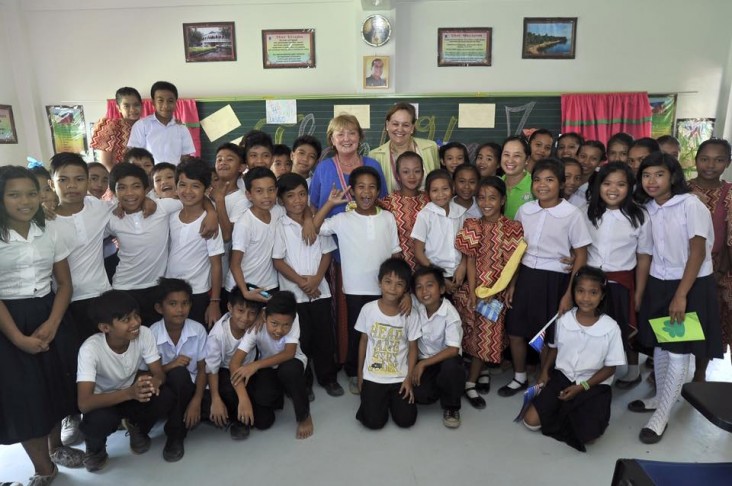
For Immediate Release
United States Agency for International Development (USAID) Chief Strategy Officer Carla Koppell will visit the Philippines October 1-2, to reinforce the U.S. government’s commitment to help Typhoon Yolanda survivors build back better.
Ms. Koppell will visit Tacloban City on October 2 to inaugurate education and health facilities with local government officials, led by Mayor Alfred Romualdez. She will be accompanied by the new USAID Philippines Mission Director Susan Brems. This visit marks Dr. Brems’ first official trip outside Manila.
Ms. Koppell, Dr. Brems, and Mayor Romualdez will launch a newly constructed five-classroom school building in Panalaron Central School, a tuberculosis treatment center, and a birthing facility at the Diit Health Center. They will also visit a community where USAID’s U.S. Office of Foreign Disaster Assistance, in partnership with Catholic Relief Services, constructed transitional shelters for 130 relocated households from 17 vulnerable, high-risk coastal barangays in Tacloban City.
To date, the U.S. government has provided approximately $143 million to help the Philippines respond to, and recover from, the devastating effects of Typhoon Yolanda. In addition to the humanitarian assistance, USAID supports rehabilitation and recovery activities in the typhoon-affected areas, particularly in Leyte Province. USAID assistance to these areas restores access to education, health services, and livelihood activities. This includes reconstructing damaged classrooms and improving the overall physical environment of schools, hospitals, rural health units and market trading centers, as well as furnishing classroom furniture, teaching kits, and hospital equipment.







Comment
Make a general inquiry or suggest an improvement.